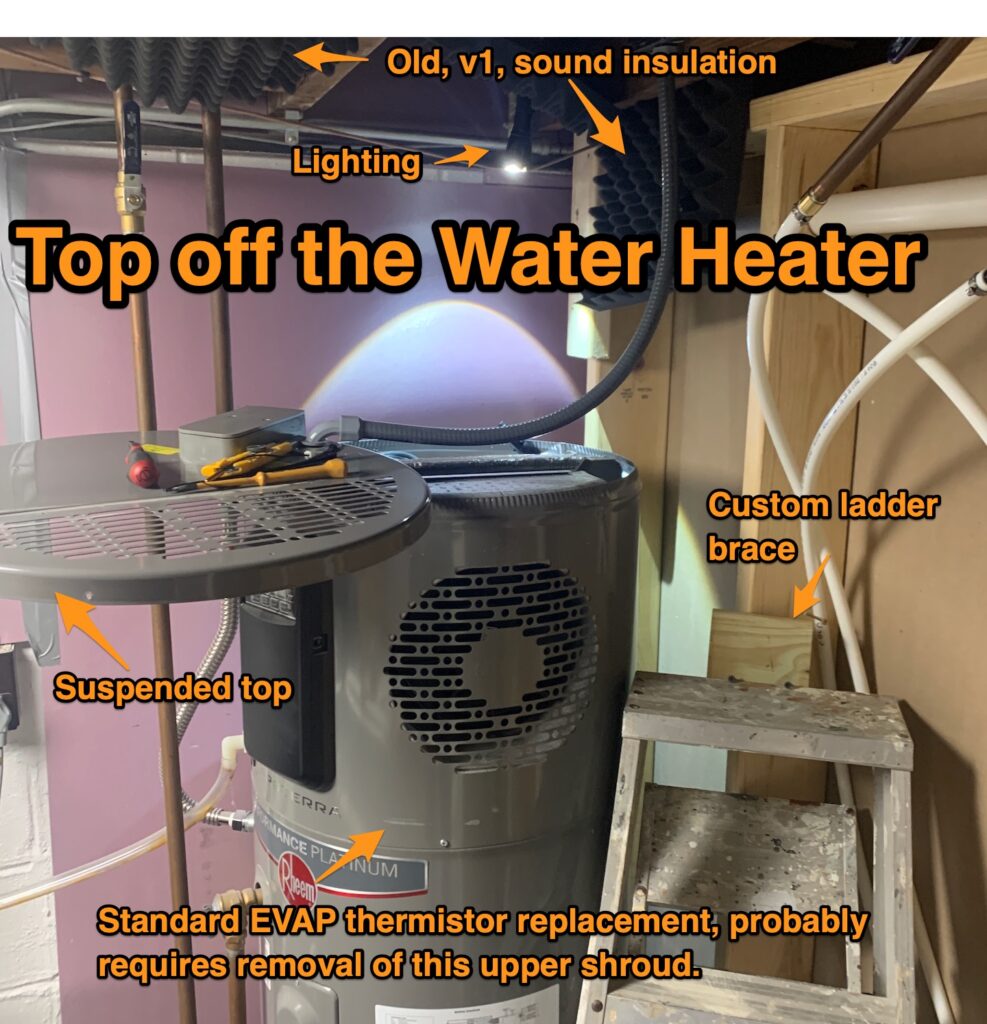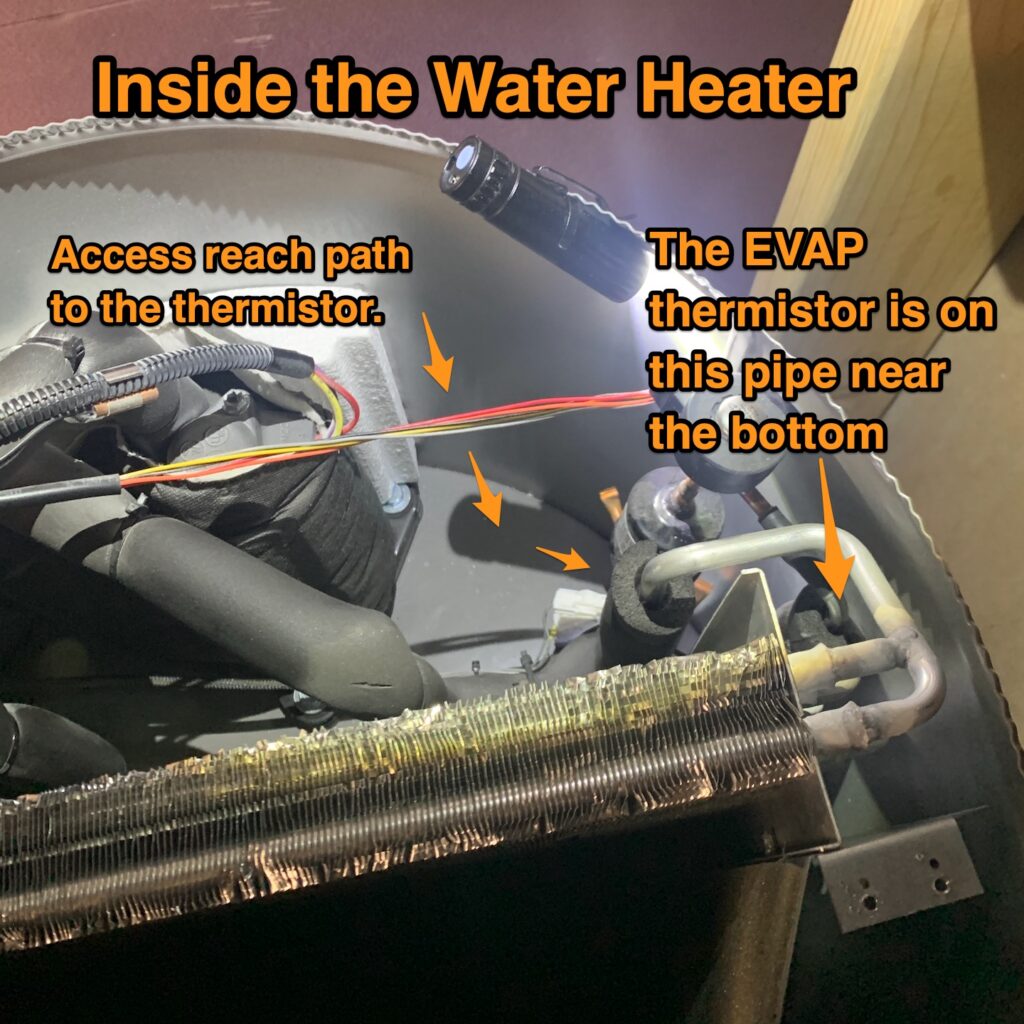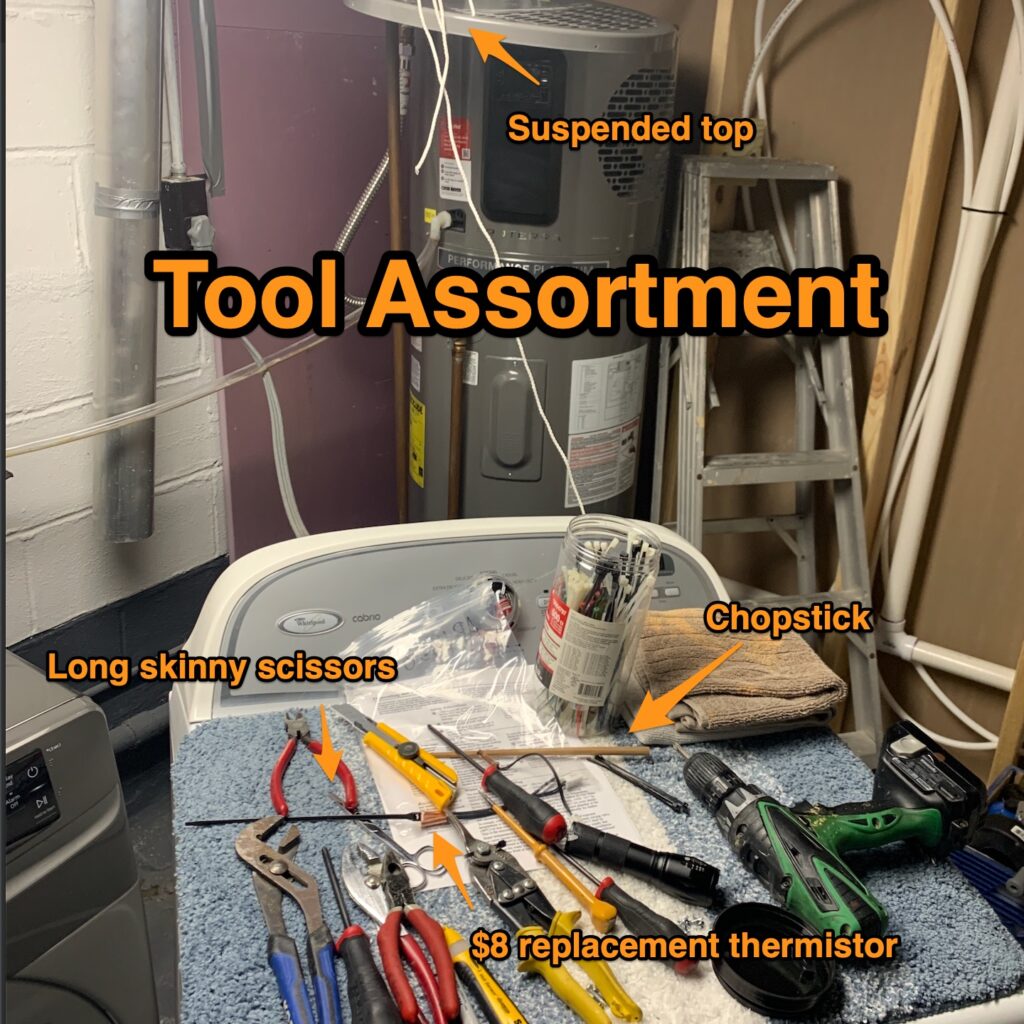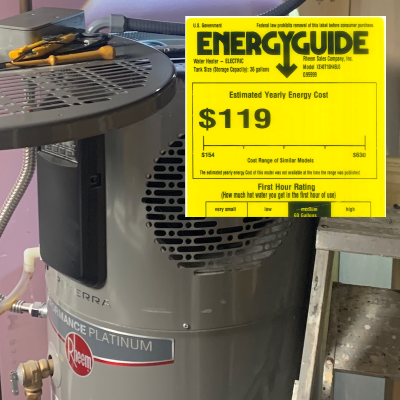My Rheem Performance Platinum water heater broke, so I ran a test!
What happened with my Hybrid Water Heater?
About a year ago, I installed a hybrid water heater, replacing an old natural gas unit. This is part of my ongoing efforts to reduce my fossil fuel consumption. A little over a month ago, the unit dropped out of hybrid mode and reported an error in the heat pump. An $8 thermistor had gone bad.
Being a penny-pinching DIY guy, I headed to YouTube in search of a fix and found a great video. This thermistor failure is a somewhat common issue. But, I dreaded doing this because so often the solution is more difficult than expected. Also, the unit was still working, just using resistive heating rather than the heat pump. These units are really smart. And a big BONUS, the unit became totally silent fixing my biggest problem with the unit, the noise!
My Instant Gratification Monkey Brain money brain came up with a great idea: delay the fix for a month and run a test of energy usage for my house. I could enjoy the quiet opperation and do a test to see how much money the unit is actually saving me and make this post possible. Then when the month is up, not only would I fix the unit, but I would also work on improved sound proofing.
Results of my test
First, I should say that I use relatively little hot water. Two people living in a small house, I shower most days at the gym, front loading low-water clothes washer, not much cooking going on, et cetera. Also, I keep the water heater temperature on a minimal 110-120 ℉ schedule. My annual usage looks to be about 500 kWh which is just over half the 848kWh Energy Guide sticker.

This result at face value is not that impressive. The heat pump has only reduced my energy usage by 40% when compared to running just via resistive heating. But, you need to consider that I use very little hot water and over half of my energy usage is from standby losses.
A normal small house using a heatpump water heater would have the same standby losses as me, but about triple the usage. I have scaled up the usage from my example to match the Energy Guide heatpump total annual usage of 848 kWh. Here is the result:
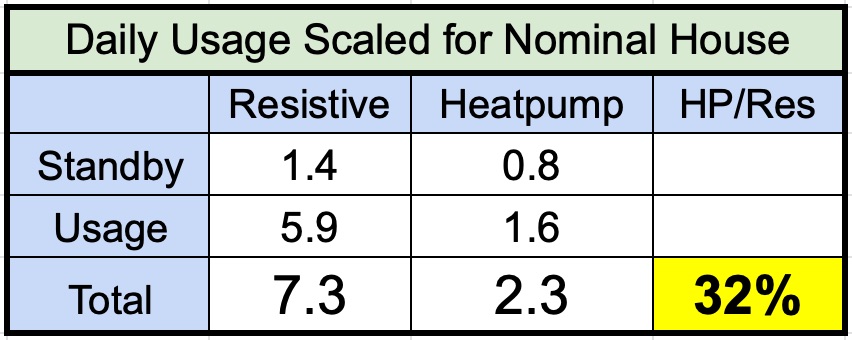
From this table you can see that for a normal house, you’d expect the energy usage of the heatpump to be only 32% of a purely resistive electric water heater. For most, this will be a more accurate result than what my data shows above.
Here is that data is graph form:

Other Considerations
I have not include any financial analysis from this data. That is quite easily added, but will be a bit dependent on your electricty costs which vary greatly. Also, there are rebates and tax incentives that would need to be considered. With high hot water demands, the benefits of the heatpump increase. Also, remember that I keep my hot water thermostat set very low and higher temperatures would also make the heatpump more attractive.
The retail cost of my Rheem Hybrid heatpump water heater is about $2k where a similarly sized resistive only unit would be about $500. This would need to be considered as well.
What about reliability? I started by saying my fancy heatpump water heater broke within a year of installation. That does not sound very reliable. Certainly, these are more complicated units than standard electrical units. I do not know how reliable they will be, or how long they will last.
Another big consideration for hybrid water heaters is placement. They do make some noise. Basically like a window air conditioner, because that is basically what they are. Also, you may want to duct the supply and exhaust air, but if you are doing this, the installation will be more complex. See next.
As a heat pump, these units are pulling heat from the supplied air. If not ducted, which I expect to be the normal installation, these will be cooling the room they are in. And, they will need to be in a big enough room to supply the heat needed. In the summer, this is a good thing. In the winter, depending on the installed location, this may ADD to your houses HEAT LOAD.
My Rheem hybrid hot water heater and most others are SMART devices that connect to your WiFi and can give you detailed data on their operation and allow totall flexibility in programming. The EcoNet app is a bit quirky, but having this really helped me collect the data from this analysis and fix the failure.
Conclusions
- Hybrid heat pump water heaters can greatly reduce the cost over a similarly sized electric-only unit.
- There are several other considerations including cost, financial analysis, reliability, and placement.
- I believe that these hybrid water heaters are part of our future more sustainable planet, but unsure how reliable they are today. Time will tell.
You can see my working google sheet here if desired.
My Special Conditions
I actually purchased my unit as a Home Depot functional scrap unit at a fraction of the retail price. This voided the warranty. I do not think the failed thermistor was because of this non-retail purchase.
I am switching from gas to electric. I already converted my kitchen. After completing the water heater switch, I only have gas running my HVAC. These means that I can completely turn off the gas supply for half the year in Cincinnati. This is an automatic savings of about $500 per year, due to the high base cost of being connected.
Repair of my Rheem Evap Thermistor
The smart Rheem water heater did an excellent job of informing me of the failure. I got email and app notifiction of: “A105 Evaporator Temp Sensor Failure.” After watching the YouTube video on repairing my water heater, I figured best case it would take me 15 minutes to replace the thermistor. I was expecting 2 hours though because that just seems to be how it works out. In the end, it was AN ALMOST IMPOSSIBLE TASK because of the placement of the failed thermistor.
The YouTube video did not show how to get to this specific thermistor. Here are the steps I took:
- Turn off and verify the electric circuit to my unit was off.
- Get a small ladder and build a custom brace to allow me access to the top of my unit.
- Remove the top plate on the water heater and hang support it with a custom cord to prevent the internal wires from getting stressed or cut against the sharp metal edges.
- Use multiple flashlights to locate the failed thermistor, which was essentially inaccessible. It was behind the evaporator and hidden under insulation wrap.
- I had to find long-handled scissors to cut the cable ties holding the insulation.
- With the help of chopsticks, I was able to expose the thermistor.
- I found that by leaning completely on top of the water heater, and with my LEFT hand, reaching down around the bottom, I could barely get 2 fingers on the thermistor.
- With the help of the chopsticks again, I was eventually able to unclip the thermistor and remove it.
- Replacing it was a bit easier, but still extremely challenging.
- Even replacing the cable ties was difficult, but once again, the chopsticks came to the rescue.
I was left wondering what would have happend if I had called a plumber. I think the standard replacement procedure must be to more move the casing around the heat pump part of the heater. This would also have involved completely disconnecting the power and also removing the control panel. Possibly someone could have done it if they knew what they were doing, but how likely would that have been.
Of all the professional plumbers I have seen in my lifetime, I’d be very surprised if any of them would have had the dexterity to do what I have done.
